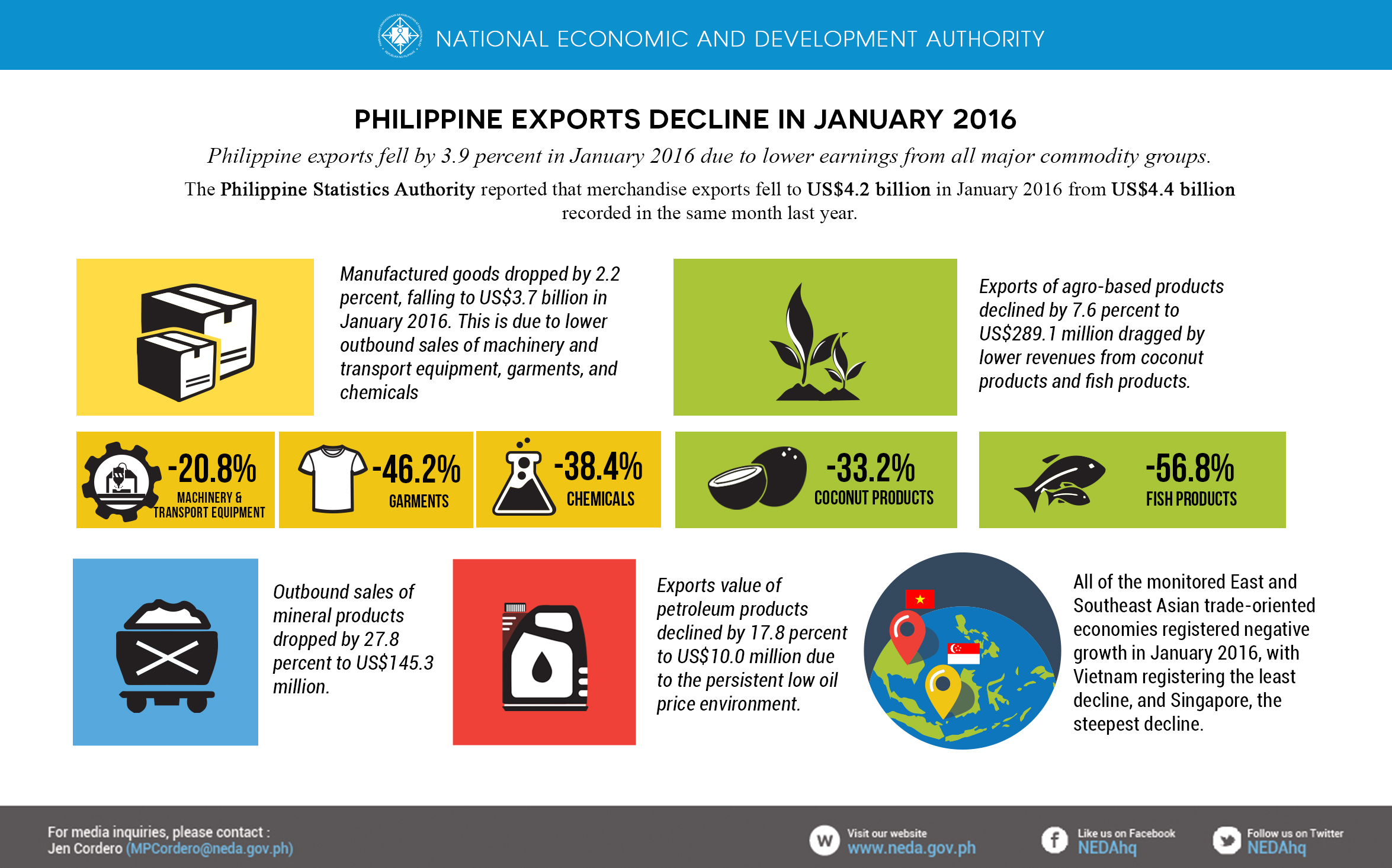
Commercial fishing vessels are required to fish outside municipal waters, which is beyond 15 km off the shoreline and are required to secure commercial fishing vessel license (CFVL) from the Bureau of Fisheries and Aquatic Resources (BFAR), which is subject to renewal every three years. The country has almost 500,000 ha of inland bodies of water, comprising 246,000 ha of swamp lands, 200,000 ha of lakes, 31,000 ha of rivers, and 19,000 ha of reservoirs.Ĭommercial fishing is classified into: a) small scale – making use of passive or active gear and utilizing fishing vessels of 3.1-20 GT b) medium scale – utilizing active gears and vessels of 20.1-150 GT and c) large scale – utilizing active gears and vessels of more than 150 GT.

Inland fisheries operate in enclosed freshwater areas such as lakes and reservoirs using vessels of 3 GT or less.
Philippines main exports code#
As defined under Republic Act (RA) 8550 otherwise known as the Philippine Fisheries Code of 1998 and as amended by RA 10654, municipal fisheries is traditional, artisanal, subsistence or small-scale fisheries that involves the use of vessels 3 gross tons (GT) or less as well as fishing operations that do not use fishing boats while commercial fisheries include all fishing operations that use vessels of over 3.1 GT. The fisheries sector is classified into capture fisheries and aquaculture, where capture fisheries is subdivided into municipal, commercial, and inland fisheries. Recently, issues on bycatch and discards in trawl and other fisheries have also been considered as threat to the country’s fisheries sustainability. dynamite and cyanide fishing, and the use of fine mesh net fishing gear) had contributed to the rapid decline of fish stocks and habitat degradation. The use of destructive fishing methods ( e.g. Commercial fishing boats continue operating in municipal waters that cause conflicts among resource users. Also, the mangrove resources have already declined, and overfishing brought about by increased number of fishers and the open access to fisheries is common to both municipal and commercial fisheries. However, the state of the country’s resources in municipal waters is lightly to heavily exploited and overfished.

In 2015, the fishing industry contributed 1.5% and 1.7% at current and constant prices, respectively, to the country’s gross domestic products (GDP) with the fisheries sector providing employment to over 1.6 million people, 85% of whom were from the municipal fisheries and 1% from commercial fisheries, while the aquaculture sector employed 14%. In 2017, the Philippines had a population of about 103 million, and mean per capita consumption of fish and fishery products of 40 kg/year or 109 grams/day with the percent of fish and fishery products intake to the total intake at 12.8%. Studies showed that its reefs are home to nearly 60% of the world’s known fishes, as well as over 300 species of corals ( Figure 2). About halfway between the provinces of Batangas and Mindoro, the Verde Island Passage boasts the highest concentration of marine species in the planet. The Philippines sits at the heart of the coral triangle, which is the global center of marine biodiversity (Carpenter and Springer, 2005). The country’s shelf and coral reef areas cover 18.46 million ha and 2.7 million ha, respectively ( Figure 1) (BFAR, 2011). The total area of marine waters including EEZ is 2,200,000 km 2 and the total length of its coastlines is 36,289 km. The Philippines is an archipelago that consists of 7,641 islands with a total land area of 301,000 km 2. 2017 Regional Fisheries Policy Network (RFPN) Member for the Philippines


 0 kommentar(er)
0 kommentar(er)
